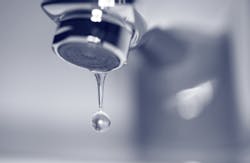BIRMINGHAM — In Water Technology’s December article, “The differences in disinfection,” Assistant Editor Maria Woodie writes about the capabilities of a few of the most common treatment solutions.
Disinfection technologies are typically applied throughout U.S. municipal water treatment plants to help protect the water from viruses, bacteria, germs and pathogens.
Three of the most widespread disinfection technologies are chlorine, ozone and ultraviolet (UV). Knowing the differences within these disinfection technologies can help dealers provide the best treatment options available and properly educate consumers, ensuring optimal water quality and safety.
- Chlorine disinfection: Chlorine is a powerful oxidizer and is very effective at treating pathogens like bacteria and viruses. However, keep in mind that chlorine can result in various issues if levels become higher than what is currently regulated (EPA requires a MCL of 4 mg/l) and produce disinfection byproducts (DBPs). Applying additional treatment, such as activated carbon, may be needed to lower or reduce the levels of chlorine in the water supply. Some water treatment professionals propose using chloramine solutions in lieu of chlorine.
- Ozone disinfection: Ozone is also an oxidizing agent and is largely effective at eliminating germs in water. Ozone is most commonly generated by exposing a stream of air to either UV light or to a high voltage electrical discharge. It is produced onsite by corona discharged in dried air or oxygen; and because ozone is very unstable, it cannot be stored or packaged and proper expertise in handing the oxidizer is crucial. For best results, always make sure to use certified ozone equipment. Common certifications include NSF, UL and CE.
- UV disinfection: UV light is produced when an electric arc is struck in mercury, in traditional lamps. UV will destroy the DNA and RNA of pathogens/organisms to stop them from multiplying. For this reason, UV disinfection is considered to be an effective treatment for water contaminated with bacteria and parasites. The effectiveness of UV disinfection will depend on the clarity of the water, the intensity of the UV light, contact time and the wavelengths being generated. UV will commonly be used in conjunction with filtration units.
Dealers effectively and sufficiently educating consumers on the various disinfection technologies over simply providing the products and services needed, will warrant happy customers, increasing the chances for further sales.
Read the entire December feature on disinfection here.
